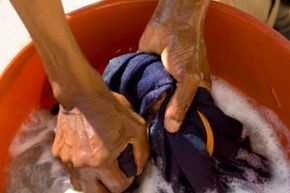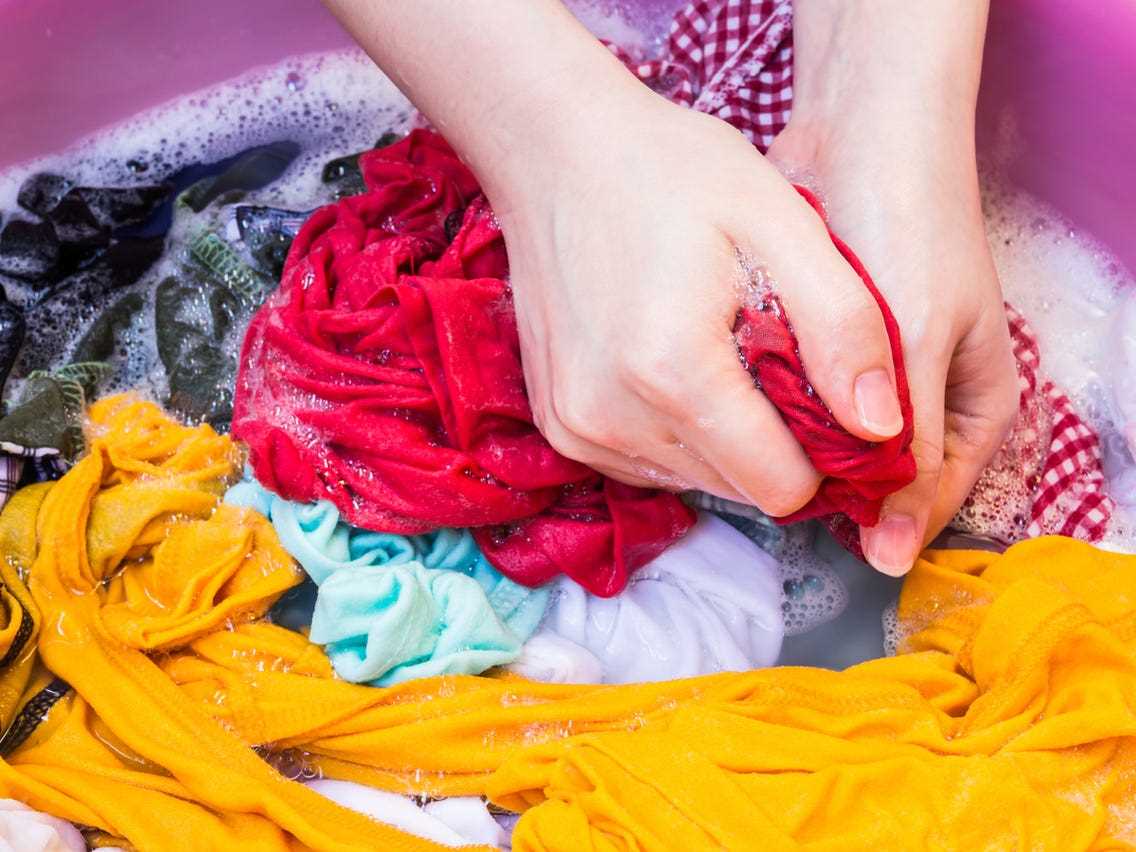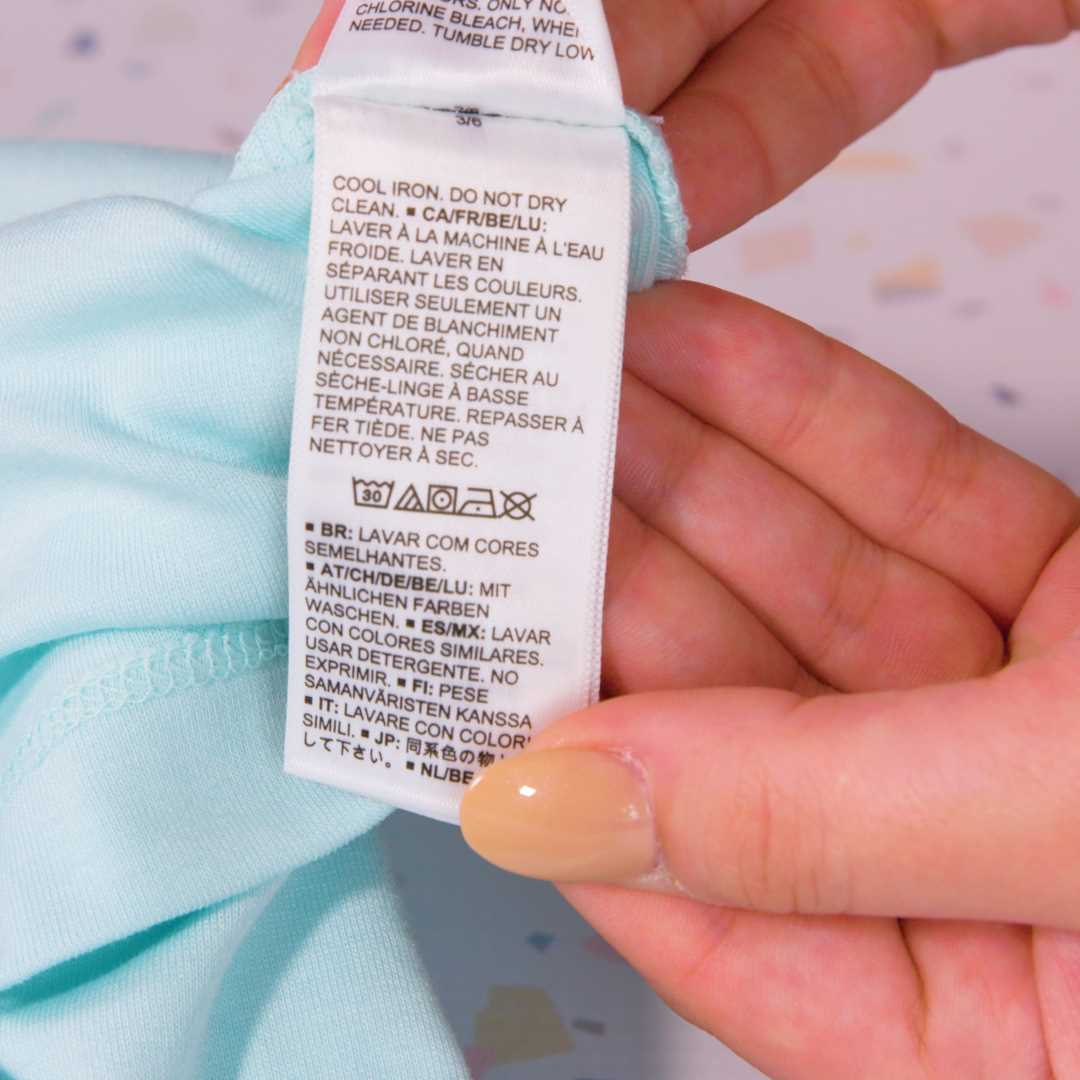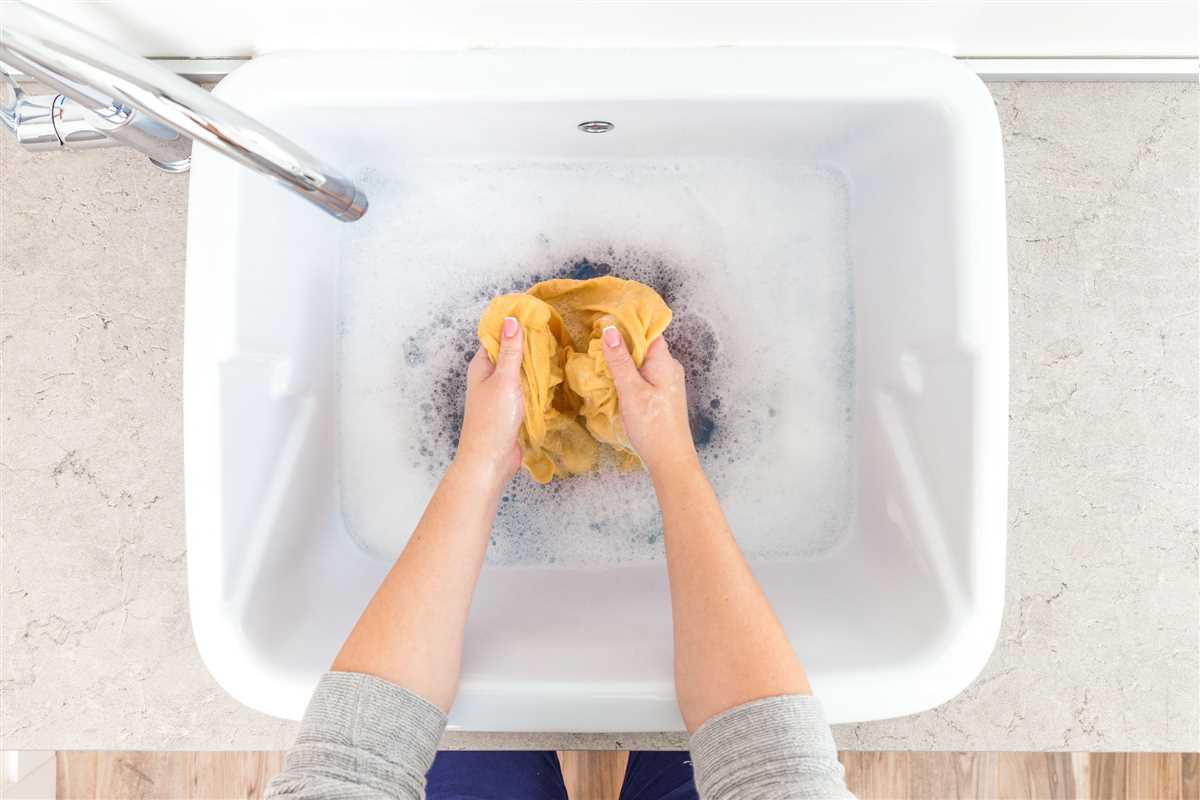




When it comes to laundering clothes, hand-washing can be a time-consuming task. However, certain fabrics require extra care and attention to ensure their longevity and quality. Knowing which fabrics should be hand-washed can save you from potential damage and preserve the lifespan of your favorite garments.
Silk is a luxurious fabric known for its delicate texture and lustrous sheen. Due to its delicate nature, silk should always be hand-washed to avoid any damage or loss of shape. Hand-washing silk garments in cold water with a mild detergent is the best way to maintain their softness and shine.
Wool is another fabric that should be hand-washed to prevent shrinking and felting. Wool garments, such as sweaters and scarves, can easily lose their shape and become misshapen if machine-washed. Gently hand-washing wool items in lukewarm water with a wool-specific detergent helps to maintain their texture and prevent damage.
“Certain fabrics require extra care and attention to ensure their longevity and quality.”
Lace is a delicate fabric that should always be hand-washed to preserve its intricate details and prevent tearing. Machine-washing lace can cause it to become tangled or damaged, ruining its elegant appearance. Hand-washing lace items in cold water with a gentle detergent ensures they will remain beautiful and intact.
Cashmere is a luxurious wool fabric that requires special care to maintain its softness and shape. Hand-washing cashmere sweaters and accessories in cold water with a cashmere-specific detergent is essential to prevent shrinking or stretching. Taking the time to hand-wash cashmere clothes will ensure their longevity and keep them looking as good as new.
Which Fabrics Should Be Hand-Washed? Essential Guide
When it comes to laundering clothes, some fabrics require special care to maintain their quality and prolong their lifespan. Hand-washing is a gentle yet effective method to clean certain fabrics that may be too delicate for machine washing. In this essential guide, we will explore the fabrics that should be hand-washed to ensure their longevity and prevent damage.
1. Silk

Silk is a delicate and luxurious fabric that should always be hand-washed. Machine washing can cause silk to shrink, lose its luster, and even develop wrinkles. To hand-wash silk garments, use cold water and a mild detergent specifically designed for delicate fabrics. Gently agitate the garment in the water, rinse thoroughly, and then carefully squeeze out excess water without wringing. Hang the item to air dry, away from direct sunlight.
2. Wool
Wool is another fabric that should be hand-washed to prevent shrinking and distortion. High heat and agitation in a washing machine can cause wool to felt and lose its shape. Fill a basin with lukewarm water and a gentle wool detergent. Submerge the wool item, gently agitate it, and let it soak for 10-15 minutes. Rinse with lukewarm water and squeeze out excess water without wringing. Lay the garment flat on a towel, reshape it, and let it air dry.
3. Cashmere
Cashmere, known for its softness and warmth, requires special care. Hand-washing cashmere ensures it remains soft and retains its shape. Fill a basin with lukewarm water and a gentle cashmere shampoo or mild detergent. Gently swirl the garment in the water and let it soak for about 10 minutes. Rinse with lukewarm water and gently squeeze out excess water without wringing. Lay the garment flat on a towel to dry.
4. Lace
Lace is a delicate fabric that should always be hand-washed to maintain its intricate patterns and prevent damage. Fill a basin with cool or lukewarm water and a gentle detergent. Submerge the lace item and gently swish it around, paying attention to any stained areas. After a few minutes, rinse the lace thoroughly with cool water and gently squeeze out excess water without wringing. Lay the lace flat on a towel to dry.
5. Delicate Embellished Fabrics

Delicate embellished fabrics, such as those with sequins, beads, or delicate embroidery, should be hand-washed to protect the intricate details and prevent damage. Fill a basin with cool water and a mild detergent suitable for delicate fabrics, such as baby shampoo. Gently swirl the garment in the water and let it soak for a few minutes. Rinse with cool water and carefully squeeze out excess water without wringing. Lay the item flat on a towel to dry.
6. Suede and Leather
Suede and leather require specialized care, and hand-washing is the safest method to clean them. Use a gentle leather or suede cleaner specifically formulated for these materials. Apply a small amount of the cleaner to a soft cloth or sponge and gently rub the stained areas. Once cleaned, use a clean, damp cloth to remove any remaining cleaner. Finally, blot the suede or leather item with a dry cloth and allow it to air dry.
7. Delicate Fabrics with Lining

Garments made from delicate fabrics and lined with other materials, such as silk or satin linings, should be hand-washed to prevent damage to both the delicate outer fabric and the lining. Follow the hand-washing instructions for the outer fabric, and gently wash the lining separately. Lay both the outer fabric and lining flat on a towel to dry.
Conclusion
Hand-washing certain fabrics is essential to preserve their quality and prevent damage. By following the appropriate hand-washing techniques for delicate fabrics like silk, wool, cashmere, lace, embellished fabrics, suede, leather, and delicate fabrics with linings, you can ensure that your clothes last longer and maintain their beauty.
Silk and Delicate Fabrics
When it comes to washing silk and delicate fabrics, it’s important to handle them with extra care. These fabrics are more fragile and prone to damage, so it’s recommended to hand wash them instead of using a washing machine.
To start, fill a basin or sink with lukewarm water. Avoid using hot or cold water, as extreme temperatures can cause silk to shrink or lose its shape. Add a small amount of mild detergent specifically designed for delicate fabrics, and stir the water to create a gentle lather.
Gently place the silk garment or delicate fabric into the soapy water. Avoid twisting, wringing, or scrubbing the fabric, as this can cause it to stretch, snag, or tear. Instead, lightly swish the fabric around in the water to remove dirt and stains.
After a few minutes, drain the soapy water and replace it with clean, lukewarm water. Rinse the fabric thoroughly by swishing it around in the water. Repeat this process until the water runs clear and there are no more suds left.
Once you’re done rinsing, carefully remove the silk or delicate fabric from the water and gently squeeze out any excess water. Avoid twisting or wringing the fabric, as this can cause it to lose its shape. Instead, place the fabric on a clean, dry towel and roll it up to absorb the remaining moisture.
After towel-drying, lay the fabric flat on another clean, dry towel or on a drying rack. Reshape the fabric if necessary, smoothing out any wrinkles or folds. Leave it to air dry away from direct sunlight, heat sources, or drafts.
If there are any stubborn stains that didn’t come out during hand washing, take the fabric to a professional cleaner who specializes in silk and delicate fabrics. They have the expertise and equipment to safely remove stains without damaging the fabric.
By following these hand-washing instructions, you can ensure that your silk and delicate fabrics remain in excellent condition for a long time. Hand washing is the gentlest method of cleaning these fabrics and helps to preserve their texture, sheen, and overall appeal.
Wool and Cashmere

Wool and cashmere are delicate fabrics that require special care when washing. They are prone to shrinking, stretching, and pilling, so it is best to hand wash these fabrics to ensure their longevity.
Hand Washing Steps
- Fill a basin or sink with cool water.
- Add a mild detergent specifically formulated for wool or cashmere.
- Gently submerge the garment in the soapy water and agitate it softly. Avoid rubbing or scrubbing, as this can cause damage.
- Let the garment soak for about 10-15 minutes.
- Drain the soapy water and refill the basin with clean, cool water.
- Gently rinse the garment by swishing it around in the water. Repeat this step until all the soap is removed.
- Gently squeeze out excess water from the garment. Avoid twisting or wringing, as this can cause stretching and shape deformity.
- Lay the garment flat on a clean towel and roll it up to remove even more water.
- Unroll the towel and reshape the garment to its original form.
- Lay the garment flat on a drying rack or a clean, dry towel. Avoid hanging it, as this can cause stretching.
- Allow the garment to air dry completely before storing or wearing.
Tips and Warnings

- Avoid using hot water, as it can cause wool and cashmere to shrink.
- Do not use bleach or harsh chemicals, as they can damage the fibers.
- Do not wring or twist the garment, as it can lose its shape.
- Handle the garment with care to prevent stretching and pilling.
- Consider using a fabric softener specifically designed for wool and cashmere to keep the fibers soft and prevent static cling.
- If unsure about the care instructions, consult the garment’s label or seek professional dry cleaning.
| Benefits | Explanation |
|---|---|
| Gentle cleaning | Hand washing provides a more gentle cleaning method compared to machine washing, reducing the risk of damage to the delicate fibers. |
| Prolongs garment life | Hand washing helps to maintain the integrity of wool and cashmere, preventing shrinking, stretching, and pilling, resulting in a longer lifespan for the garment. |
| Controlled process | When hand washing, you have more control over the washing process, ensuring that the garment is handled delicately and properly rinsed. |
Lace and Embroidered Fabrics

Lace and embroidered fabrics are delicate and often require special care. Hand-washing is the recommended method for cleaning these materials to ensure they maintain their structure and intricate details.
When hand-washing lace and embroidered fabrics, it is important to use a gentle detergent specifically designed for delicate clothing. Avoid using harsh chemicals that can damage the delicate fibers and threads of these fabrics.
To hand-wash lace and embroidered fabrics, follow these steps:
- Fill a basin or sink with lukewarm water and add the recommended amount of gentle detergent.
- Gently submerge the lace or embroidered fabric in the water, making sure it is fully saturated.
- Using your hands, gently agitate the fabric in the soapy water, taking care not to stretch or pull on the delicate details.
- Allow the fabric to soak in the soapy water for a few minutes to loosen any dirt or stains.
- Gently rinse the fabric with cool water until all the soap residue is removed. Avoid wringing or twisting the fabric, as this can damage the delicate fibers.
- Press the fabric between layers of a clean towel to remove excess water. Avoid rubbing or scrubbing the fabric to prevent damage.
- Lay the lace or embroidered fabric flat to dry on a clean, dry towel or a drying rack. Avoid hanging the fabric, as this can stretch out the delicate details.
- Once the fabric is completely dry, gently iron it on a low heat setting, using a pressing cloth to protect the delicate details. Avoid ironing directly on the lace or embroidered areas.
By hand-washing lace and embroidered fabrics, you can ensure their longevity and preserve their intricate design. Always read the care instructions provided by the manufacturer, as some specific lace or embroidered fabrics may have unique cleaning requirements.
Linen and Rayon

Linen:
- Linen is a natural fabric made from flax fibers.
- It is known for its crisp texture and breathable properties.
- Linen can shrink and wrinkle easily if not properly cared for.
- Hand-washing is recommended to maintain the fabric’s integrity.
- Fill a basin or sink with lukewarm water and add a mild detergent.
- Gently swish the linen garment in the soapy water for a few minutes.
- Rinse the garment thoroughly to remove any soap residue.
- Gently squeeze out the excess water, but do not wring or twist the linen.
- Shape the garment back into its original form and lay it flat to dry.
- Avoid hanging linen garments to dry, as this can cause stretching.
- Iron the linen on a low setting while it is still slightly damp to remove any wrinkles.
Rayon:
- Rayon is a semi-synthetic fabric made from regenerated cellulose fibers.
- It is soft, lightweight, and has a subtle sheen.
- Rayon can be delicate and may require hand-washing or a gentle cycle in the washing machine.
- Check the care label of your rayon garment to determine the recommended washing method.
- If hand-washing is recommended, fill a basin or sink with lukewarm water and add a mild detergent.
- Gently swish the rayon garment in the soapy water for a few minutes.
- Rinse the garment thoroughly to remove any soap residue.
- Press out the excess water, but avoid wringing or twisting the rayon.
- Lay the garment flat to dry on a clean, absorbent towel.
- Reshape the rayon garment as it dries to prevent stretching.
- If ironing is necessary, use a low heat setting and iron the rayon while it is slightly damp.
Acetate and Acrylic
Acetate and acrylic fabrics are delicate and require special care when washing. Hand-washing these fabrics is highly recommended to avoid damage and maintain their quality.
Acetate
Acetate is a synthetic fabric that is known for its satin-like appearance and luxurious feel. While it is often used for evening wear and formal dresses, it is also commonly used for linings and upholstery.
To hand-wash acetate fabrics:
- Fill a basin or sink with cold water.
- Add a small amount of mild detergent and mix well.
- Submerge the acetate fabric in the soapy water.
- Gently agitate the fabric with your hands, avoiding any harsh rubbing or scrubbing.
- Rinse the fabric thoroughly with cold water until all soap residue is removed.
- Press out excess water gently, without wringing or twisting the fabric.
- Lay the fabric flat on a clean towel and roll it up to remove more water.
- Finally, lay the fabric flat to air dry, away from direct sunlight.
Acrylic

Acrylic is a synthetic fabric that is known for its softness and warmth. It is commonly used in sweaters, blankets, and winter wear. Due to its delicate nature, hand-washing is the best way to care for acrylic fabrics.
To hand-wash acrylic fabrics:
- Fill a basin or sink with lukewarm water.
- Add a small amount of mild detergent and mix well.
- Place the acrylic fabric in the soapy water and gently agitate it.
- Rinse the fabric thoroughly with lukewarm water to remove all soap residue.
- Press out excess water gently, without wringing or twisting the fabric.
- Wrap the fabric in a clean towel and gently squeeze out more water.
- Finally, reshape the fabric and lay it flat to air dry.
Remember, always check the care label on your acetate or acrylic fabrics for any specific instructions or recommendations from the manufacturer. By following these hand-washing steps, you can help extend the lifespan of these delicate fabrics and keep them looking their best.
FAQ
What fabrics should be hand-washed?
Fabrics that should be hand-washed include delicate fabrics like silk, lace, cashmere, and wool. These fabrics are prone to shrinkage and damage when machine-washed.
Can I hand-wash cotton clothes?
Yes, you can hand-wash cotton clothes. Cotton is a durable fabric that can withstand hand-washing without much risk of shrinkage or damage. However, always check the care label on the garment to ensure it is safe to hand-wash.
Why should I hand-wash delicate fabrics instead of machine-washing them?
Hand-washing delicate fabrics is recommended because machine-washing can cause these fabrics to shrink, lose their shape, and get damaged. Delicate fabrics like silk, lace, cashmere, and wool require more gentle care to maintain their quality and appearance.
How should I hand-wash silk garments?
To hand-wash silk garments, fill a basin with lukewarm water and add a mild detergent specifically designed for delicate fabrics. Gently agitate the silk item in the soapy water, then rinse it thoroughly with clean water. Avoid twisting or wringing out silk as it can damage the fabric. Instead, gently squeeze out the excess water and lay the garment flat to dry.












